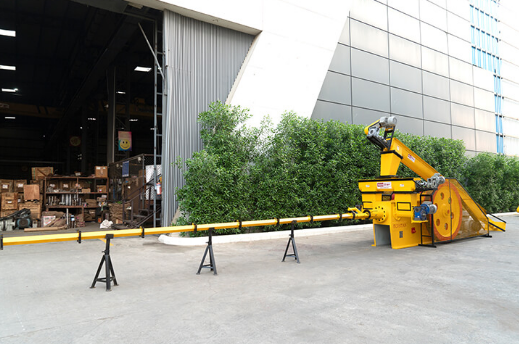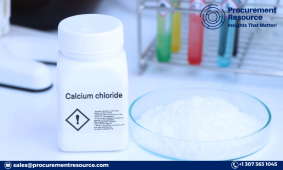A2Bookmarks Canada Social Bookmarking Website
Welcome to A2Bookmarks Canada, your go-to platform for seamless social bookmarking in Canada. We provide an intuitive way to save, organize, and share your most valued web pages and links. Whether you’re a business aiming to increase your online presence or an individual keen on managing your favorite websites, A2Bookmarks Canada is here to help. Join our vibrant community and leverage powerful bookmarking tools to strengthen your digital footprint and connect with users across Canada. Start bookmarking with ease and make your online experience more efficient and enjoyable!


How Pellet Mill Machines Improve Feed Production Efficiency ecostan.com
Introduction
Over the past few decades, feed production has experienced substantial change, however one machine, the Pellet Mill Machine keeps raising the bar for concrete, measurable advancement. This equipment has become essential for farms, feed mills, and other agricultural enterprises seeking more control over quality, cost, and time. Not only is the procedure quicker, but it is also more intelligent. Animal nutrition improves, waste decreases, and feed becomes more consistent.
This post describes the operation of a pellet mill machine and its significance to feed producers. This equipment may help you do more without stress, whether running a commercial enterprise or a small farm.
A Pellet Mill Machine: What Is It?
Powdered feed materials are compressed into solid pellets by a pellet mill machine. It is simpler to measure, transport, and store these pellets. Because of the heat and pressure employed in the pelletizing process, they are also simpler for animals to digest.
Essential Elements:
Die and Roller Assembly: The feed is shaped and compacted by the die and roller assembly.
Feeder: Controls the amount of raw material that gets into the machine.
Conditioner: Enhances binding by adding moisture or steam.
Motor: The compression is powered by a motor.
Less waste, more consistent output, and easier processes are just a few of the human-like effects this will have on your business.
Why Pelletizing Increases Productivity
Here are some reasons why pelletizing increases productivity:
1. Cuts Down on Feed Waste
Loose or powdered feed may separate, blow away, or deteriorate during handling. Pellets remain intact and adhere to one another.
Principal Advantages:
- No separation of ingredients
- Extended shelf life
- Reduced loss while in transit
2. Increases Animal Feed Intake
The texture and shape of the pellets are consistent. They are more quickly and reliably consumed by animals than mash feed, particularly poultry and cattle.
3. Enhances Absorption of Nutrients
Controlled pressure and heat are used throughout the pelletizing process. This improves the digestion of complex nutrients and aids in the breakdown of fibers.
Optimizing Your Pellet Mill Equipment
Proper setup and operation are essential for optimal outcomes. Here are some easy actions you may take:
Decide on the Proper Moisture Level
- Fill the conditioner with moisture (usually using steam).
- Too dry? Pellets might break.
- Too damp? Pellets might disintegrate.
Select the Appropriate Die Size
- Finer pellets are required for smaller animals.
- Thick cuts can be handled by larger animals.
Regularly Clean the Die
- Uneven feed and jamming are caused by accumulated residue.
Where Pellet Mill Equipment Is Most Important
There isn’t a single machine that works for everyone. They are helpful in several feed-producing areas:
Utilization on Farms
- On demand, farmers may create new feed.
- Lessens dependency on outside vendors.
- Perfect for farms with a variety of animals.
Commercial Plants for Feeding
- Supports manufacturing on a vast scale.
- Keeps the quality of the product constant.
- Lowers the cost of transportation and packaging.
Specialty Food Manufacturers
- Excellent for organic mixes, fish feed, and rabbit feed.
- Gives additional formulation control.
Straightforward Upkeep Advice for Extended Use
With proper maintenance, pellet mill machines can operate for many years. Here’s how to maintain their best condition:
Every day Verifications:
- Take out any remaining feed.
- Check for wear on the moving components.
Weekly Assignments:
- Lubricate the bearings.
- Examine the belts and bolts.
Tune-Up Every Month:
- Clean the die and rollers thoroughly.
- If necessary, replace worn-out components.
In addition to safeguarding your investment, routine maintenance guarantees consistent performance with less downtime.
Considerations for Purchasing a Pellet Mill Machine
Not every machine operates in the same manner. Your organization’s size, nature, and budget will determine which one is best for you.
Consider:
- Capacity: How many kilos/hour?
- Power Source: Electric or diesel?
- Type of Feed: Dry, moist, or a mix?
- Material Quality: The longevity of stainless steel
- Availability of spare parts: simple to replace, less stressful later
Conclusion
Despite its seemingly simple design, the pellet mill machine significantly influences feed output. It increases productivity, makes feeding easier, and enables you to produce higher-quality goods with reduced inputs. The right tools are crucial, regardless of whether you’re feeding a small herd or providing for large-scale operations.
It provides dependable, well-made pellet mill machines designed to withstand harsh environments. If you’re searching for long-term, dependable equipment, Ecostan is the right choice. Their solutions are designed to help farmers, feed producers, and agribusinesses with reliable engineering and low maintenance.
Select gear that puts in as much effort as you do, and then allow the outcomes to do the talking.
















